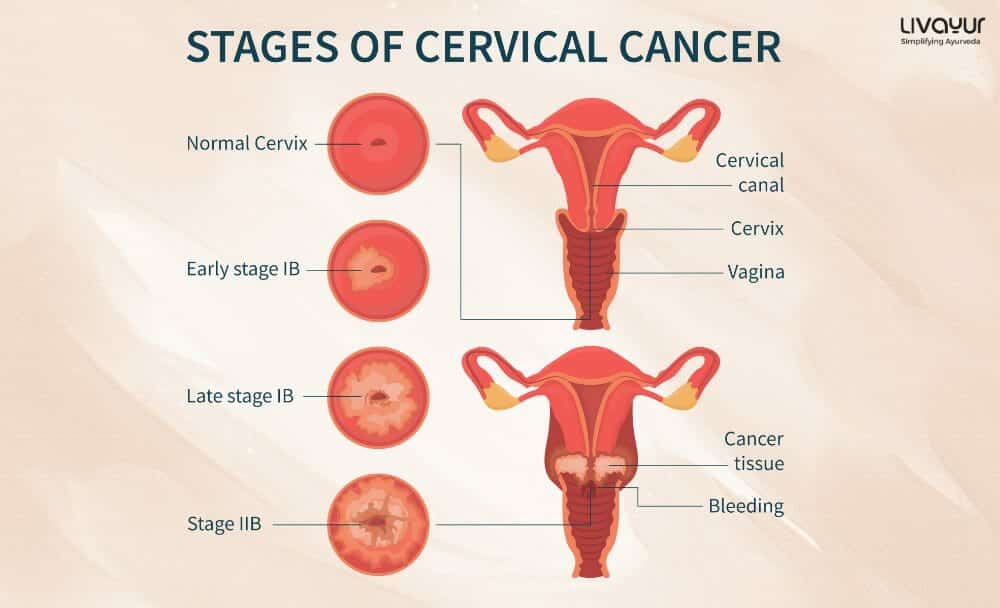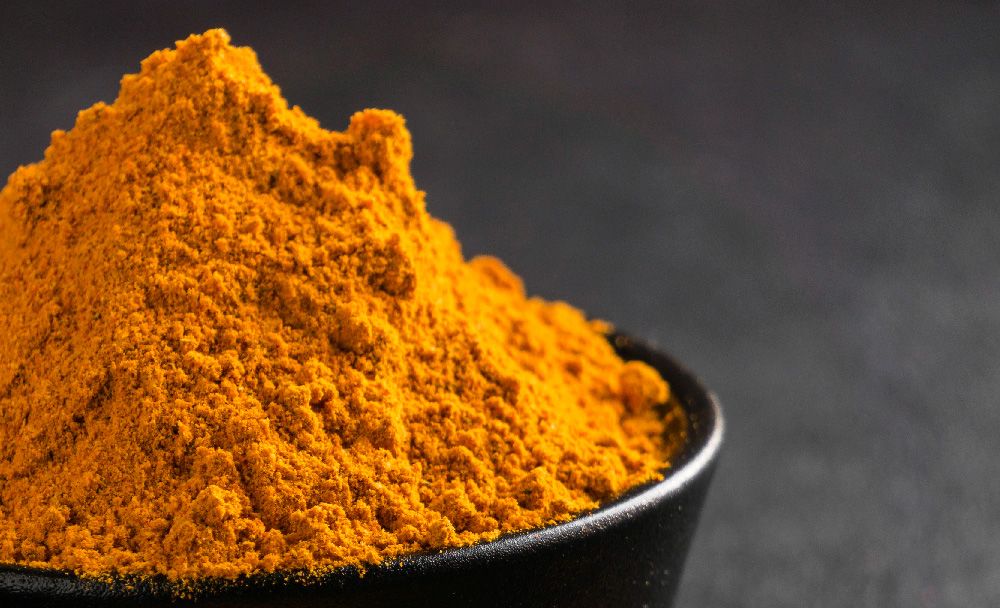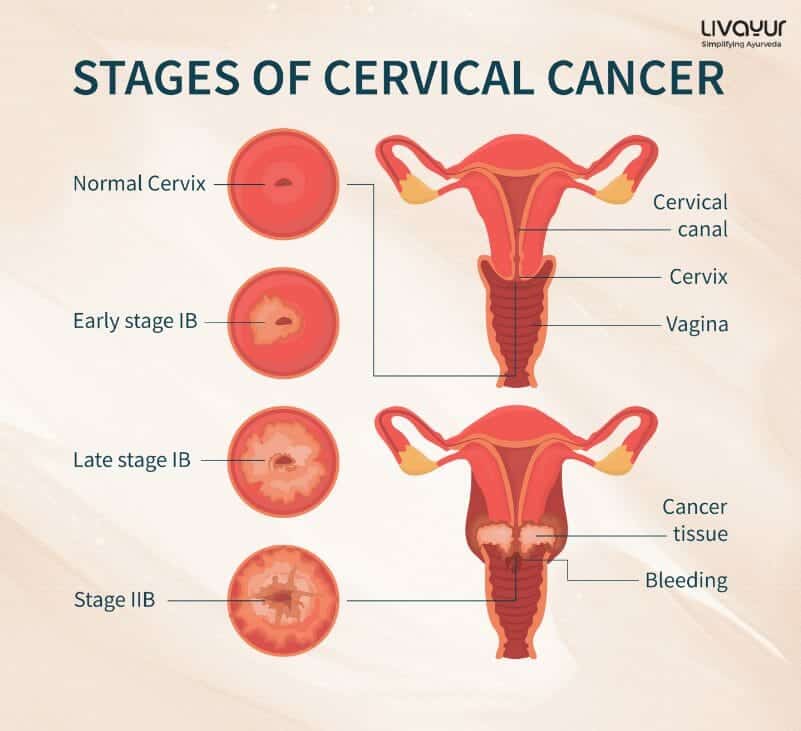This article is reviewed by an expert Last reviewed on April 30, 2025

Cervical Cancer is a type of Cancer that affects the cervix, the lower part of the uterus that connects to the vagina. It is caused by the abnormal growth of cells in the cervix, and it can spread to other parts of the body if not treated early. [1] [2] In this article, we will provide an overview of Cervical Cancer, including its symptoms, causes, diagnosis, prevention, and treatment using Ayurvedic remedies.
Overview of Cervical Cancer
Cervical Cancer is a common type of Cancer that affects women around the world. According to the World Health Organization (WHO), Cervical Cancer is the fourth most common cancer among women, with an estimated 604,000 new cases and 342,000 deaths in 2020 alone (WHO, 2021). It is most often diagnosed in women over the age of 30, and it is more common in women who have certain risk factors, such as human papillomavirus (HPV) infection, smoking, and a weakened immune system. [1] [2]
Symptoms of Cervical Cancer
Cervical Cancer may not cause any noticeable symptoms in its early stages. However, as the Cancer grows and spreads, it can cause a variety of symptoms, including:
- Abnormal vaginal bleeding, such as bleeding between periods, after sex, or after menopause [3]
- Pain during sex [3]
- Unusual vaginal discharge [3]
- Pain in the pelvic area [3]
- Painful urination [3]
If you experience any of these symptoms, it is important to see your doctor immediately. While these symptoms may be caused by conditions other than Cervical Cancer, it is always wise to get them checked.
Causes of Cervical Cancer
Cervical Cancer is caused by the abnormal growth of cells in the cervix. These cells can become Cancerous due to a variety of factors, including:
HPV infection: HPV is a common sexually transmitted infection that can cause Cervical Cancer. It is responsible for nearly all cases of Cervical Cancer (National Cancer Institute, 2022). [4]
Smoking: Smoking can increase the risk of developing Cervical Cancer by damaging the DNA in Cervical cells.[4]
Weak immune system: A weakened immune system, such as that caused by HIV/AIDS or certain medications, can increase the risk of developing Cervical Cancer.[4]
Diagnosis of Cervical Cancer
Cervical Cancer is usually diagnosed through a combination of a physical exam, pelvic exam, and tests such as a Pap smear or HPV test. During a Pap smear, your doctor will take a sample of cells from your cervix and send it to a lab for testing. If abnormal cells are found, further testing may be done to determine if they are Cancerous. An HPV test can also be done to check for the presence of HPV, which can cause Cervical Cancer.[5]
If Cervical Cancer is suspected, further tests may be done to determine the stage of the Cancer and whether it has spread to other parts of the body. These tests may include imaging tests such as X-rays or CT scans, and biopsies to take samples of tissue from the cervix or other areas of the body.[5]
Prevention of Cervical Cancer
Prevention is key when it comes to Cervical Cancer, and there are several steps women can take to reduce their risk of developing the disease. These steps include:
Getting vaccinated against HPV: The HPV vaccine can prevent the strains of HPV that are most likely to cause Cervical Cancer. The vaccine is recommended for all boys and girls between the ages of 9 and 14, and for women up to age 45 who have not yet been vaccinated (National Cancer Institute, 2022).[4]
Practising safe sex: Using condoms during sex can reduce the risk of contracting HPV and other sexually transmitted infections that can increase the risk of Cervical Cancer.[4]
Getting regular Pap smears: Pap smears can detect abnormal cells in the cervix before they turn Cancerous. Women should start getting Pap smears at age 21, or earlier if they are sexually active (American Cancer Society, 2022).[4]
Quitting smoking: Smoking can increase the risk of developing Cervical Cancer, so quitting smoking can help reduce the risk.[4]
Treatment of Cervical Cancer
If Cervical Cancer is detected early, it can often be treated successfully. The treatment options for Cervical Cancer depend on the stage of the Cancer, the size and location of the tumour, and the woman’s overall health.
Here are some of the common treatment options for Cervical Cancer:
Surgery: Surgery is the most common treatment for early-stage Cervical Cancer. It involves removing the Cancerous tissue and the surrounding healthy tissue. The type of surgery depends on the stage and size of the Cancer. In some cases, a hysterectomy (removal of the uterus) may be necessary. [6]
Radiation therapy: Radiation therapy uses high-energy radiation to kill Cancer cells. It can be used alone or in combination with surgery or chemotherapy. There are two types of radiation therapy: external beam radiation and internal radiation (brachytherapy). External beam radiation involves directing radiation from outside the body toward the Cancer. Internal radiation involves placing a radioactive source inside the body near the Cancer.[6]
Chemotherapy: Chemotherapy uses drugs to kill Cancer cells. It can be given alone or in combination with radiation therapy or surgery. Chemotherapy is usually given intravenously (through a vein), but it can also be given orally (by mouth).[6]
Targeted therapy: Targeted therapy is a newer type of treatment that targets specific molecules in Cancer cells to stop their growth. It can be used in combination with chemotherapy or radiation therapy.[6]
Immunotherapy: Immunotherapy assists the immune system in battling Cancer. Biomarker tests(using tissue samples) can aid in forecasting an individual’s reaction to particular immunotherapy medications.[6]
Ayurvedic Remedies
Ayurvedic remedies for Cervical Cancer focus on strengthening the immune system, reducing inflammation, and promoting overall health and well-being to help with the recovery process after conventional treatments.
Here are some Ayurvedic remedies that can be used to aid in recovery after treatment of Cervical Cancer:

Turmeric: Turmeric is a spice that has anti-inflammatory and antioxidant properties. It can help reduce inflammation and promote healing in the body. It can be taken as a supplement or added to food. [7] [9]

Ginger: Ginger is another spice that has anti-inflammatory properties. It can help reduce inflammation and pain in the body. It can be taken as a supplement or added to food.[8] [9]
Ashwagandha: Ashwagandha is a herb that is commonly used in Ayurvedic medicine. It can help boost the immune system and reduce stress, which can help improve overall health and well-being.[7]

Tulsi: Tulsi, also known as holy basil, is a herb that has antibacterial and anti-inflammatory properties. It can help reduce inflammation and boost the immune system. It can be taken as a supplement or added to food.[8] [9]
Yoga and meditation: Yoga and meditation are practices that can help reduce stress and promote relaxation. They can also help improve overall health and well-being. [10]
While Ayurvedic remedies can be used in conjunction with conventional treatment for Cervical Cancer, it is important to note that they should not be used as a substitute for conventional medical treatment. These remedies are solely meant for helping in the recovery process post-treatment by eliminating toxins from the body. Women with Cervical Cancer should work closely with their healthcare providers to determine the best course of treatment for their individual needs.
FAQs
1. Can Cervical Cancer be cured?
Cervical Cancer can be cured if it is caught early and treated promptly. The type of treatment will depend on the stage of the Cancer and whether it has spread to other parts of the body.
2. Is Cervical Cancer hereditary?
While Cervical Cancer is not usually considered a hereditary disease, there may be genetic components that increase the risk of developing the disease in some women.
3. Can Cervical Cancer be prevented?
Yes, Cervical Cancer can be prevented by getting vaccinated against HPV, practising safe sex, getting regular Pap smears, quitting smoking, and maintaining a healthy immune system.
4. Are there any natural remedies for Cervical Cancer?
Yes, Ayurvedic remedies such as turmeric, ginger, ashwagandha, and tulsi can be used to treat Cervical Cancer. However, they should not be used as a substitute for conventional medical treatment.
5. Can Cervical Cancer recur after treatment?
Yes, Cervical Cancer can recur after treatment. Women who have been treated for Cervical Cancer should continue to have regular follow-up appointments with their healthcare providers to monitor for any signs of recurrence.
Conclusion
Cervical Cancer is a serious disease that can affect women of all ages. For those who are diagnosed with Cervical Cancer, Ayurvedic remedies can be used in conjunction with conventional medical treatments to promote healing and improve overall health and well-being. It is important for women to educate themselves about Cervical Cancer and to work closely with their healthcare providers to ensure early detection and effective treatment. With proper care and attention, women can take steps to prevent and manage Cervical Cancer, allowing them to lead healthy and fulfilling lives.
Disclaimer: This article explores Cervical Cancer from a Modern Medicine perspective with some ayurvedic remedies which are not replacements for conventional treatments but are meant to be used alongside them. Kindly seek the assistance of a trained medical practitioner for diagnosis and treatment before incorporating any of the mentioned remedies into your daily routine.
References:
- Cervical Cancer (who.int)
- What Is Cervical Cancer? – NCI
- Cervical Cancer Symptoms – NCI
- Cervical Cancer Causes, Risk Factors, and Prevention – NCI
- Cervical Cancer Diagnosis – NCI
- Cervical Cancer Treatment – NCI
- Review Of Research On Gynecological Cancers In Ayurveda – An Update
- Bioactive Components Procured from Plant Extracts and their Roles in Cancer Prevention and Treatment: A Review (iomcworld.org)
- AntiCancer and Cytotoxic Potential of Turmeric (Curcuma longa), Neem (Azadirachta indica), Tulasi (Ocimum sanctum) and Ginger (Zingiber officinale) Extracts on HeLa Cell line
- Effect of Yoga as Nursing Intervention on Stress, Anxiety and Quality of Life among Cervical Cancer Patients





















